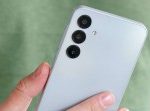
You want your laptop to be fast, light, and reliable, but while you’re focused on the behind-the-scenes specs you may be overlooking one of the most important features staring you right in the face: the display.
Even though many of us spend a huge chunk of our day typing away at a laptop — or streaming movies and playing games — it’s the one screen we haven’t been paying nearly enough attention to lately. But that’s all changed thanks to Samsung’s OLED technology.
Among the most visually stunning laptops on the market, the HP Spectre x360 14 has a Samsung 4K OLED touchscreen, which is nearly borderless for more screen and less frame. In the world of high-performing laptops, Samsung’s OLED technology is more than just easy on the eyes.

Credit: Samsung
It’s brighter and lighter to carry
As we’ve seen in high-end TVs and smartphones, OLED technology produces vibrant and realistic colors. On a laptop, Samsung’s OLED offers a more dazzling display than an LCD and is thinner and lighter. A 13.3-inch OLED panel is less than half as thick as an LCD and weighs 27% less, leaving more room for a powerful battery. The highly portable HP Spectre x360 14 packs a lot into its convertible, 2.95-pound package with its high-performing touchscreen.
It also handles the dark better
Since individual pixels on an OLED screen can turn off, an OLED pixel producing the color black goes completely dark or “true black.” In contrast, an LCD is always backlit, so it can’t produce true black. This gives Samsung’s OLED display an edge for improving how your screen looks when you’re watching a blockbuster; paired with the Spectre’s Bang & Olufsen audio, you’ll get the full cinematic experience. Compared with LCDs, OLED screens also increase energy savings when in dark mode, since OLED pixels displaying black are actually able to turn off.
It gives off less blue light and VOCs
Another benefit of Samsung’s OLED display is that it emits less blue light, which can mess with your sleep cycle, make your eyes feel blurry after a long day, and even damage the retina. Harmful blue light makes up just 6.5% of the OLED spectrum — one of the lowest percentages among current laptop displays.
When it comes to indoor air quality, Samsung’s OLED panels give off fewer volatile organic compounds (VOCs) which can have adverse health effects. In an industry first, Samsung’s OLED laptop panels received Greenguard certification from global safety science leader UL for low VOC emissions.
Powered by WPeMatico







